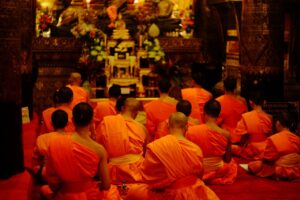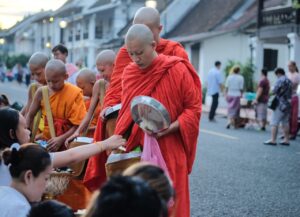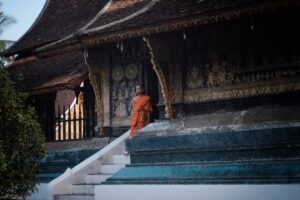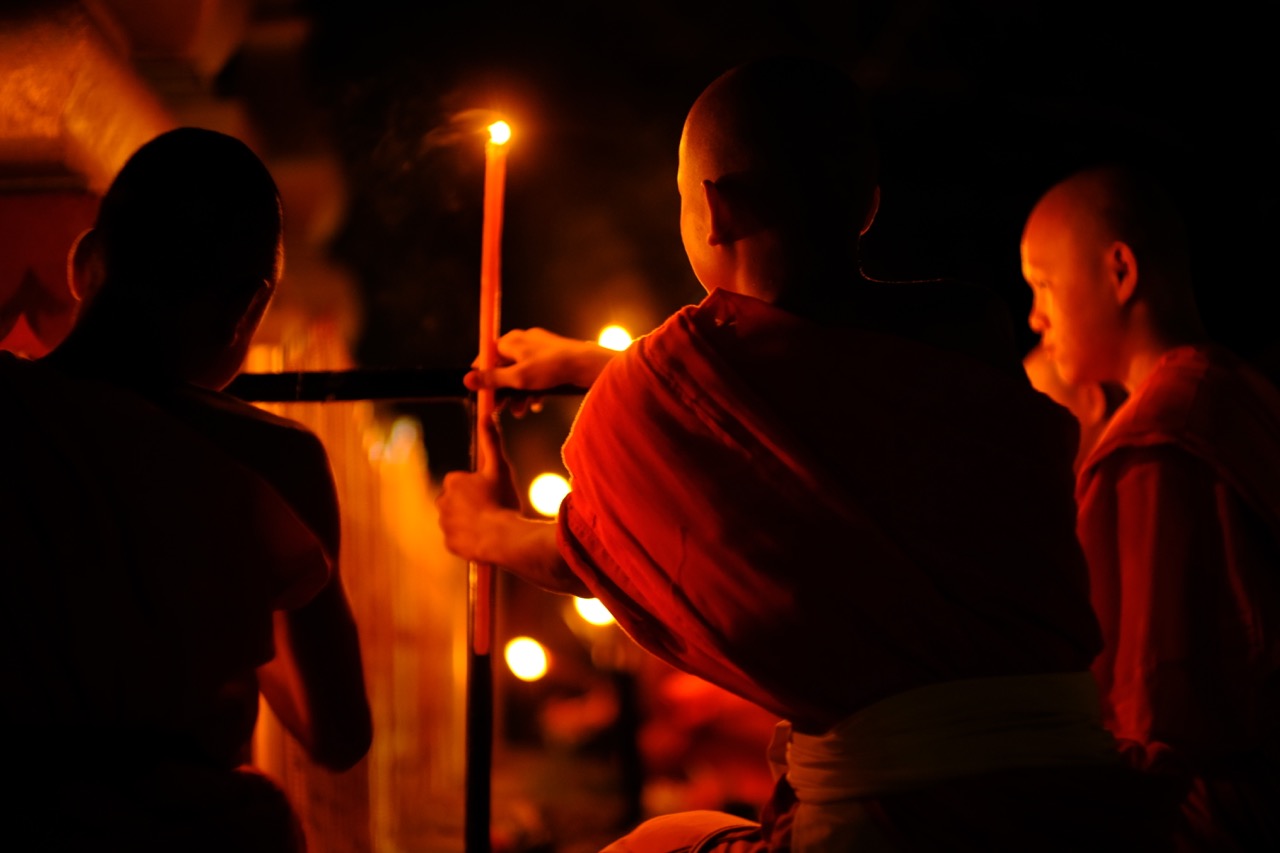All about the monkhood in Luang Prabang
Visitors to Luang Prabang are enchanted by the sight of many charming temples scattered around the peninsula. The fact that there are more than 35 temples in the UNESCO heritage zone alone illustrates how important Buddhism is in Laos. Monks in their orange robes are a common sight around the city and you may wonder how and why they chose to be a monk. I spoke with a few monks around the city to learn their viewpoints.
What kind of Buddhism is practiced in Laos?
Theravada Buddhism is the school of Buddhism that draws its scriptural inspiration from the Tripitaka, or Pali canon, which contains the earliest surviving record of the Buddha’s teachings.
How do monks and novices join the order?
There are many poor rural villages where schooling is not available and parents will send their children to bigger towns to be educated. Temples provide a solid education for their brethren. In Luang Prabang, all males under 18 are educated at the Buddhist Secondary School at Wat Phou Khouay or the Buddhist Elementary School at Wat Mano. They attend school from 8 am to 4 pm. Only males can become novices. Almost every Lao male will have entered the temple as a novice at least once in their life. Usually when a person dies the male relatives will go to the temple, shave their head as a mark of respect and stay at the temple for anywhere from a day to a week to make merit for the deceased. It is also common for a person to become a monk sometime before he gets married to build merit for his parents.

What do they learn in school?
Novices study subjects such as mathematics and science and will do exams in these subjects. They also learn more esoteric topics such as Marxist-Leninist political theory, Buddhist lore, and meditation taught by senior monks.
What is the difference between a novice and a monk?
A novice vows to live by 10 precepts (rules to oversee behavior or thought). At the age of 20 novices can vow to live by 227 precepts and become fully ordained monks. In practice, though, many novices will leave the monkhood after their high school education.
Why do monks chant?
Chanting is a way to be part of a community, learn the teachings of the Buddha, and also to achieve a sense of calm in preparation for meditation. Each temple decides what to chant but it is usually a sutra (teaching of the historical Buddha) in the Pali language.
Temples and the community
Temples are closely tied to the community, not only as a place of worship but where people can turn for material assistance. Often people in need will perform tasks at the temple in exchange for food. In the past, temples also dispensed herbal medicines and were renowned for their knowledge of plants. Just like “healing hands” in Christianity, some monks were also thought to possess supernatural powers to cure the sick.
Life after the temple
On leaving the temple, some monks become artisans, teachers, or craftsmen. One of the tasks of being a monk is the restoration and repair of buildings and holy artifacts which gives monks tangible skills they can use to make a living. Being a monk also teaches valuable personal qualities such as how to share and be empathetic. Once a monk leaves the temple there is no rule to stop them from going back later in life, if they choose.

What is almsgiving?
Tak bat (almsgiving) is the giving of food by laypeople to the monks. They will walk a regular route and members of the community will offer them sticky rice. Sticky rice is said to symbolize the glue that holds Lao society together. When a layperson gives alms to the monks it gives them a chance to make merit regardless of their social status.
If you want to participate in this tradition, you should wear a scarf over your shoulder, kneel on a mat and offer sticky rice or some fruit. It’s best for the health of these young people not to give candy or sweets. Sit on the ground below the monks to show your reverence and place your offering in the monks’ bowls as they pass by.
As long lines of monks are a photo op not to be missed we do recommend keeping your distance and not using a flash.
What should I wear when visiting the temples?
Please be respectful and cover your shoulders and legs above the knee. Do not wear revealing or see-through clothing. If you enter a temple building make sure that you remove your shoes. If you are going to be visiting numerous temples, it’s best to wear slip-on shoes so you can take them on and off easily. Monks sit on the ground during meditation so the floor needs to remain clean. Don’t show the bottoms of your feet, don’t point your feet to any people or Buddha statues, and don’t touch anyone on the head. Temples are usually open in the evening for chanting at sunset. You may visit a temple any day you wish, but if you visit on a wan sin (a holy day on the full or new moon), the temple could be busier than normal with extra activities.
The Ten Precepts for Novices:
– Refrain from killing living things
– Refrain from stealing
– Refrain from unchastity
– Refrain from lying
– Refrain from taking intoxicants
– Refrain from taking food after noon
– Refrain from singing, dancing, playing music, or attending entertainment
– Refrain from wearing perfume, cosmetics, and garlands
– Refrain from sitting on high chairs and sleeping on luxurious, soft beds
– Refrain from accepting money

Getting there
Lao Airlines has frequent flights to Luang Prabang from Vientiane, Pakse, Hanoi, Bangkok, Chiang Mai, and Siem Reap.
Text BY Anita Preston
PHOTOGRAPHS BY Anita Preston / Evensong Film



 ລາວ
ລາວ
